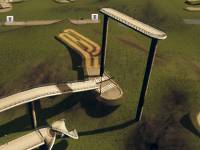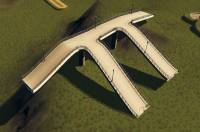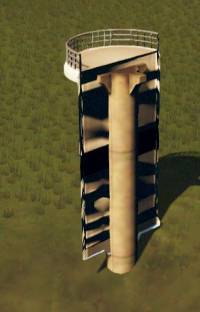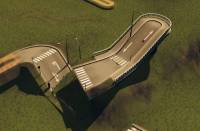Historical maps
The group discussed the usage of historical maps and geodata using the Wikimedia environment. Out of the discussion we decided to work on 4 learning items and one small hack.
The learning items are:
- The workflow for historical maps - the Wikimaps workflow
- Wikidata 101
- Public artworks database in Sweden - using Wikidata for storing the data
- Mapping maps metadata to Wikidata: Transitioning from the map template to storing map metadata in Wikidata. Sum of all maps?
The small hack is:
- Creating a 3D gaming environment in Cities Skylines based on data from a historical map.
Data
This hack is based on an experimentation to map a demolished and rebuilt part of Helsinki. In DHH16, a Digital Humanities hackathon in Helsinki this May, the goal was to create a historical street view. The source aerial image was georeferenced with Wikimaps Warper, traced with OpenHistoricalMap, historical maps from the Finna aggregator were georeferenced with the help of the Geosetter program and finally uploaded to Mapillary for the final street view experiment.
The Small Hack - Results
Our goal has been to recreate the historical area of Helsinki in a modern game engine provided by Cities: Skylines (Developer: Colossal Order). This game provides a built-in map editor which is able to read heightmaps (DEM) to rearrange the terrain according to it. Though there are some limits to it: The heightmap has to have an exact size of 1081x1081px in order to be able to be translated to the game's terrain.
To integrate streets and railways into the landscape, we tried to use an already existing modification for Cities: Skylines which can be found in the Steam Workshop: Cimtographer by emf. Given the coordinates of the bounding box for the terrain, it is supposed to read out the geometrical information of OpenStreetMap. A working solution would be amazing, as one would not only be able to read out information of OSM, but also from OpenHistoricalMap, thus being able to recreate historical places. Unfortunately, the algorithm is not working that properly - though we were able to create and document some amazing “street art”.
Another potential way of how to recreate the structure of the cities might be to create an aerial image overlay and redraw the streets and houses manually. Of course, this would mean an enormous manual work.
Further work can be done regarding the actual buildings. Cities: Skylines provides the opportunity to mod the original meshes and textures to bring in your very own structures. It might be possible to create historical buildings as well. However, one has to think about the proper resolution of this work. It might also be an interesting task to figure out how to create low resolution meshes out of historical images.
Team
- Susanna Ånäs
- Karin Tonollo
- Elena Scepankova
- Stephan Unter









